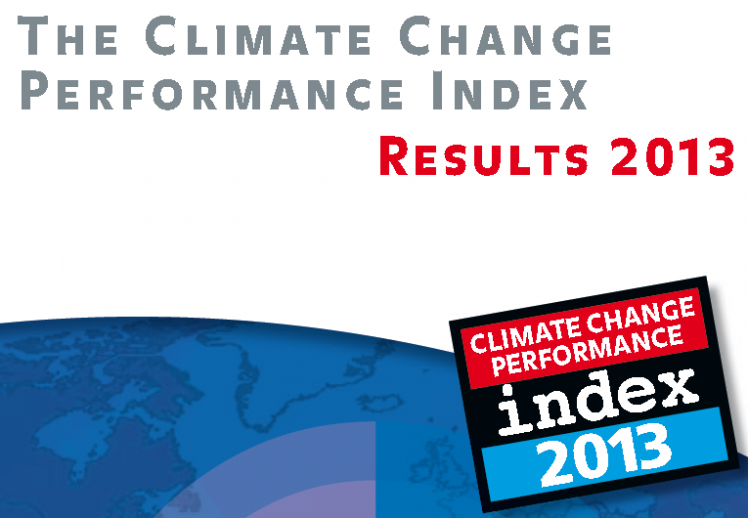Climate Change Performance Index 2013

2013
‘Climate Change Performance Index 2013’ is a ranking of 58 countries that was published recently by ‘Germanwatch’ and ‘Climate Action Network Europe’ – with the help of over 230 experts worldwide. 80% of the evaluation is based on indicators of emissions (30% for emissions levels and 30% for recent development of emissions), efficiency (5% level of efficiency and 5% recent development in efficiency) and renewable energy (8% recent development and 2% share of total primary energy supply). For the first time emissions from deforestation is included. The remaining 20% of the evaluation is based on national and international climate policy assessments by experts from the respective countries.
Climate Change Performance Index aims to put pressure on those countries which have failed to take ambitious action on climate protection and highlight those countries with best-practice climate policies. The 58 countries in the Index are responsible for more than 90% of the global energy-related CO2 emissions. The following country examples illustrate the consequences of the Index’s assumptions.
The first comparative example: Ireland is ranked as the 6th best performing country and the performance is characterized as “good”. What is not apparent is that Ireland emitted an average of 8.5 tons of CO2 per capita annually in 1990-1999 and 10.6 tons in 2000-2008. In the years 2009-2011, emissions were cut down to the same level as in the 1990s with an average of 8.5 tons – and therefore Ireland has climbed to the top six of the Performance Index. As a comparison, India is ranked no. 21 in the Index and the performance is characterized only as “Moderate”. India emitted an average of 0.8 tons of CO2 per capita annually in 1990-1999, 1.1 tons in 2000-2008 and 1.4 tons in 2009-2011. This increase is surely acceptable for a poor country like India with a GDP(ppp-$) per capita 1/11 of the size of Ireland’s. In ClimatePositions India is contribution free (no climate debt), but not for long if the current rate of CO2 emission increase continues.
The second comparative example: Portugal is the 3rd best performing country in Climate Change Performance Index 2013 and the performance is characterized as “good”. Portugal emitted an average of 5.0 tons of CO2 per capita annually in 1990-1999 and 5.9 tons in 2000-2008. In the years 2009-2011, emissions were cut down to the level in the 1990s with an average of 5.0 tons – and therefore Portugal climbed to the top three of the Performance Index. On the other hand, Morocco is ranked only no. 17 in the Index and the performance is characterized as “Moderate”. Morocco emitted an average of 1.0 tons of CO2 per capita annually in 1990-1999 and 1.2 tons in 2000-2008 as well as in 2009-2011. This again is acceptable for a country with a GDP(ppp-$) per capita 1/5 of the size of Portugal’s. Morocco is contribution free in ClimatePositions.
With the chosen evaluation methods that are supposedly “designed to enhance transparency in international climate politics,” it is not surprising that the European Union occupy 9 of the top 10 rankings in the Climate Change Performance Index (the exception is Switzerland with a close relationship with EU).
The best performing country in the Index is by the way Denmark (with the world’s largest ecological footprint, excluding CO2) and the second best is Sweden (with the world’s largest nuclear power generation per capita). Paradoxically, one might say!
Source on CO2 emissions: EIA, U.S. Energy Information Administration (links in the menu “Calculations”).
Comments are closed.